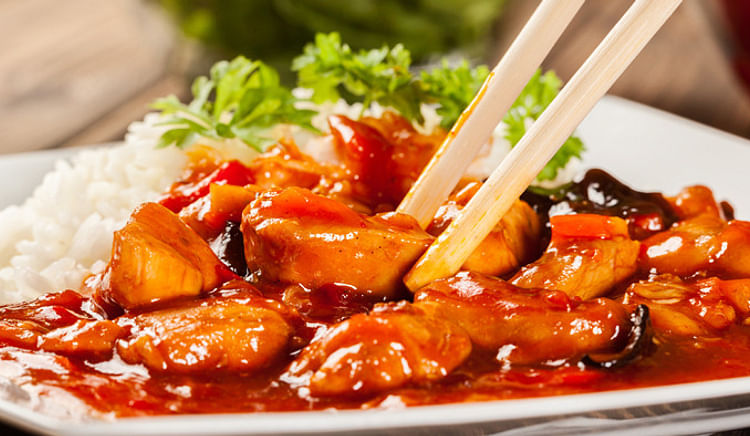
If you go to a Chinese restaurant in India and look around, you will probably see people digging into noodles or fried rice with side dishes which are swimming in gravy.
This is very different from what you would observe in Chinese restaurants around the world.
Internationally, the noodles and fried rice served are full of flavour and work as one-dish meals which do not need accompaniments. Side dishes, on the other hand, tend to be dry and tossed in the wok and are had with portions of steamed rice. Rarely do these places serve the corn flour-based gravies seen in Indo-Chinese restaurants.
So what made gravy-based side dishes so popular in Indian Chinese restaurants?
Did the owners feel that this was a good way to attract palates trained on the ubiquitous dal rice, the Punjabi kadi chawal or the Bengali machher jhol bhat? Did they feel that Indians needed a gravy to go along with their rice and noodles?
Or is this an example of smart business sense? Serving a bland fried rice or noodles ensures that a side dish is ordered with it. This increases the ticket size per customer.
A quick poll on Twitter and Facebook showed that most people prefer dry side dishes to ones with gravy. Yet, if one looks around in any restaurant, gravy-based dishes clearly dominate. They seem to define the genre of Indian-Chinese cuisine.
Which side of the gravy train do you sit? Do you like your side dishes dry or submerged in sauce when it comes to Chinese food?
It is time to take a stand.
Written By
Kalyan Karmakar authors the popular award winning blog, Finely Chopped and is an authority on the food of Mumbai. His extensive knowledge of the city's food scene has been featured in publications such as Femina, Mumbai Mirror and BCC Good Food. He was one of the founding critics of EazyDiner's Mumbai team.

